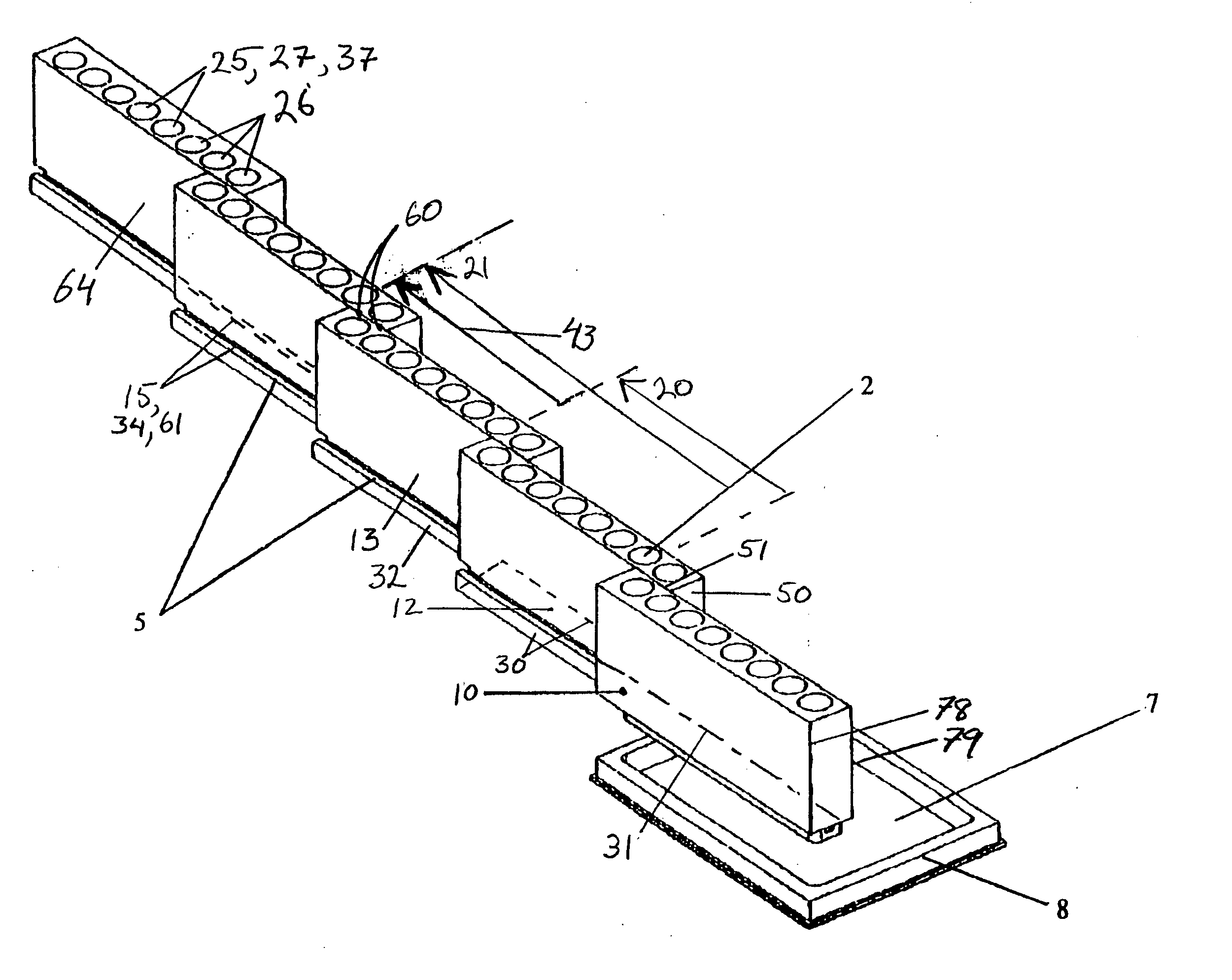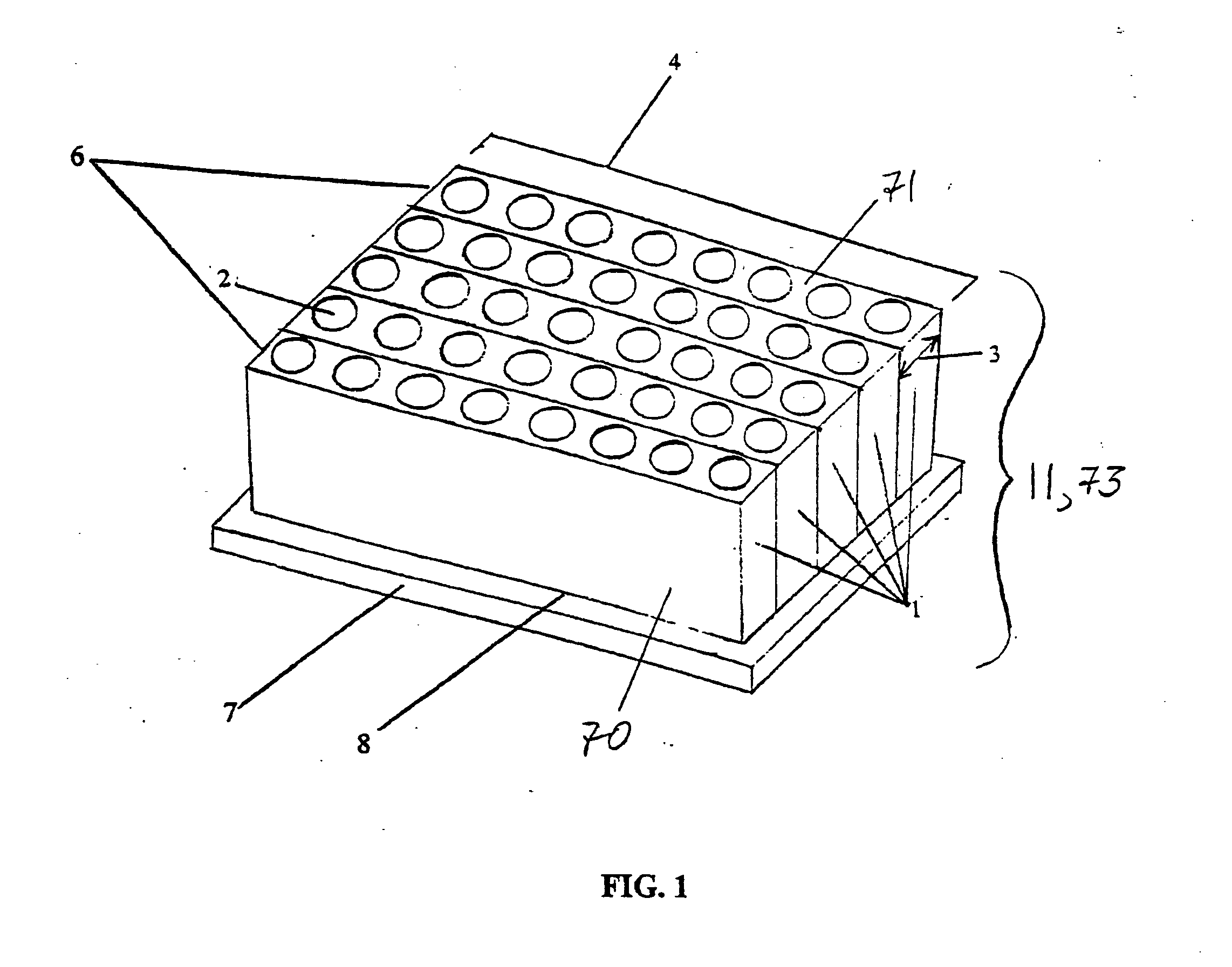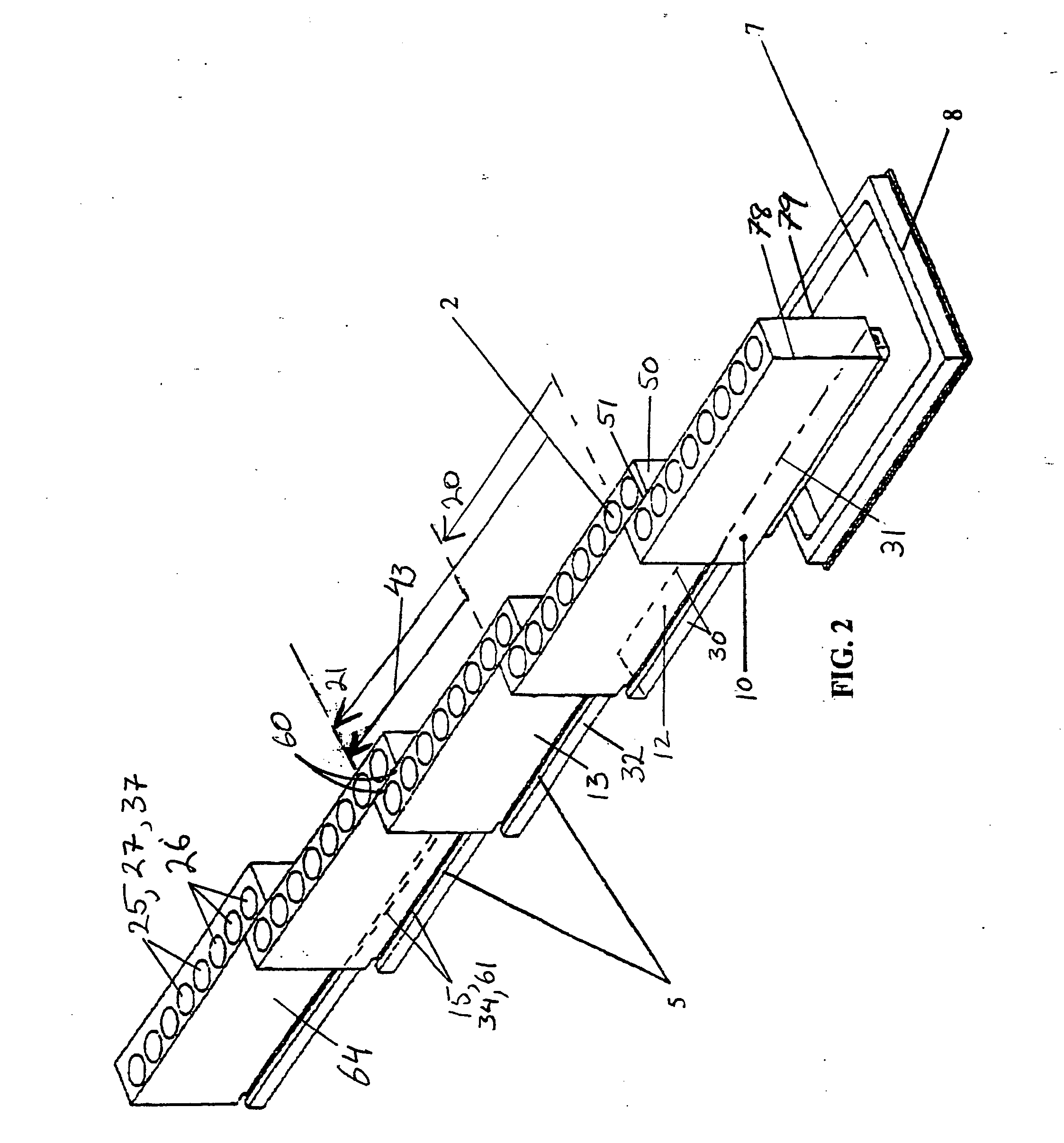[0008] Generally, this invention relates to an extendably reconfigurable sample carrier containment
system or sample retention apparatus for and methods of securing sample carriers such as test tubes, cuvettes and the like, or samples, in an orderly matrix fashion and providing for a rearrangement into a substantially linear fashion without requiring the translocation of individual specimen carriers, thereby saving time, reducing errors and providing for more reliable sample test results.
[0009] Rearrangement of a plurality of similar appearing specimen carriers such as, for example, test tubes, from a planar row-by-row fashion into a substantially linear fashion is often desired by individuals performing tests on contained substances because such individuals find that a substantially linear presentation (or more generally, a presentation that is other than row-by-row) of similar appearing items is less likely to result in
individual item identification errors than is a row-by-row presentation of items. The substantially linear arrangement of sample carriers, in presenting sample carriers such as test tubes substantially in only one dimension, allows for easier handling of an individual sample or sample carrier (such as physically retrieving a carrier from or placing a carrier into a certain receptacle) and easier and less error-prone manipulation of the contained substance (such as adding a
reagent to a contained substance or removing a portion of a substance from its carrier). The present invention may be configured in two stable opposite modalities or configurations (in addition to other intermediate modalities which may be included under the term “extended”)—one is compacted (or retracted), in which receptacles for holding sample carriers such as test tubes, or the samples themselves, may be presented for use in a row-by-row, matrix type arrangement that is common among commercially available microtitre plates. The retracted modality of the present invention may include a tray for holding and securing in its compacted form the receptacle housings, or more generally, the sample retention housing elements. Another, opposite modality of the invention is fully extended, in which the specimen carrier receptacles, or more generally, sample retention elements, may be presented in a substantially linear form as part of a plurality of receptacle housing rows or sample retention housing elements, each of which may have only one side of one (e.g., 50) or both ends positioned adjacent and perhaps in physical contact with (or close to) a side of an end of a different sample retention housing element. Reconfiguration from the compacted (or retracted) to the extended (whether fully extended or not) modality may be provided for by reconfiguration elements such as a slideably coupled, interlocked track and runner device that engages adjacent receptacle housing segments or adjacent sample retention housing elements. The housing, and a tray in which the housing may securely rest, may be sized such that the device, in its compacted form, may readily interface with loading systems of
specimen processing equipment, by, for example, fitting into receptacles for microtitre plates that may exist as part of an
autoclave or
centrifuge.
[0010] It is a goal of this invention to provide a more accurate testing process by eliminating the step of translocation of individual specimen carriers, while still providing (a) the advantages offered by a standard matrix type microtitre arrangement (such as compatibility with different pieces of equipment used for sample determination such as an
autoclave or
centrifuge that are designed to operate on matrix type microtitre plates of certain size), and (b) the capability of (re)arrangement into a less error prone, substantially linear arrangement. The
elimination of the step of translocation of individual specimen carriers into a less error-prone substantially linear arrangement results in a specimen testing process that is inherently more accurate, that provides test results in which scientists and other users of the
test data can be more confident, and, simply, is faster.
[0011] It is a goal of the present invention to achieve a higher sample carrier density (higher is defined relative to typical commercially available matrix-type microtitre plates), thereby enabling the inclusion of more contained samples per, for example,
autoclave run, and effecting
cost savings (and a saving of time that might otherwise be spent loading and unloading individual specimen carriers). This higher density (or closer proximity of one receptacle or sample retention element to another) can be achieved because the present invention, with its reconfiguration capability, eliminates the obstruction effect presented by rows of carriers without requiring
relocation of any individual carriers, thereby enabling easier manipulation and handling of any single individual specimen carrier. Such a higher density sample retention apparatus may referred to as a sample retention element density enhanced sample retention apparatus.
 Login to View More
Login to View More  Login to View More
Login to View More 


